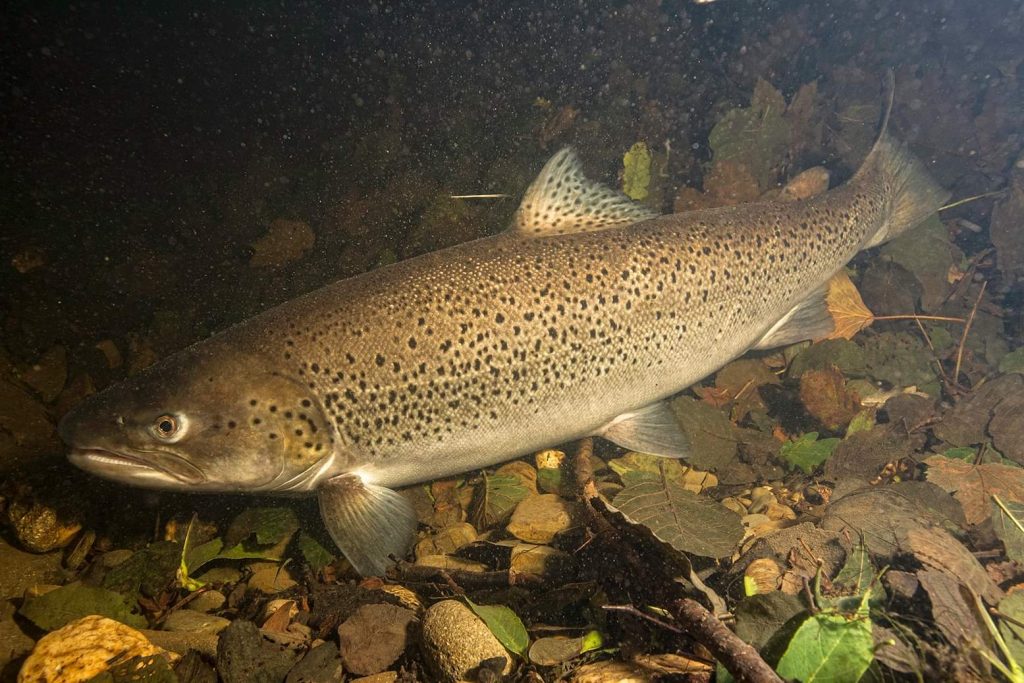
Sea trout photography credit: David Miller
Spinning for Brown Trout in the UK | 20 Tips
Trout fishing where I’m from in Cornwall means seeking out secret streams behind car parks, exploring the moors, or fishing one of the many trout lakes or private rivers. In this guide I will make the case that each of these trout can be thought of as distinct, requiring slightly different approaches. We’ll go through 20 trout fishing tips that can improve your lure fishing. These are based on three key types of trout: lake trout, river trout and the larger sea trout and ferox trout.
This site is reader supported and earns commissions through amazon affiliate should you buy through any links.
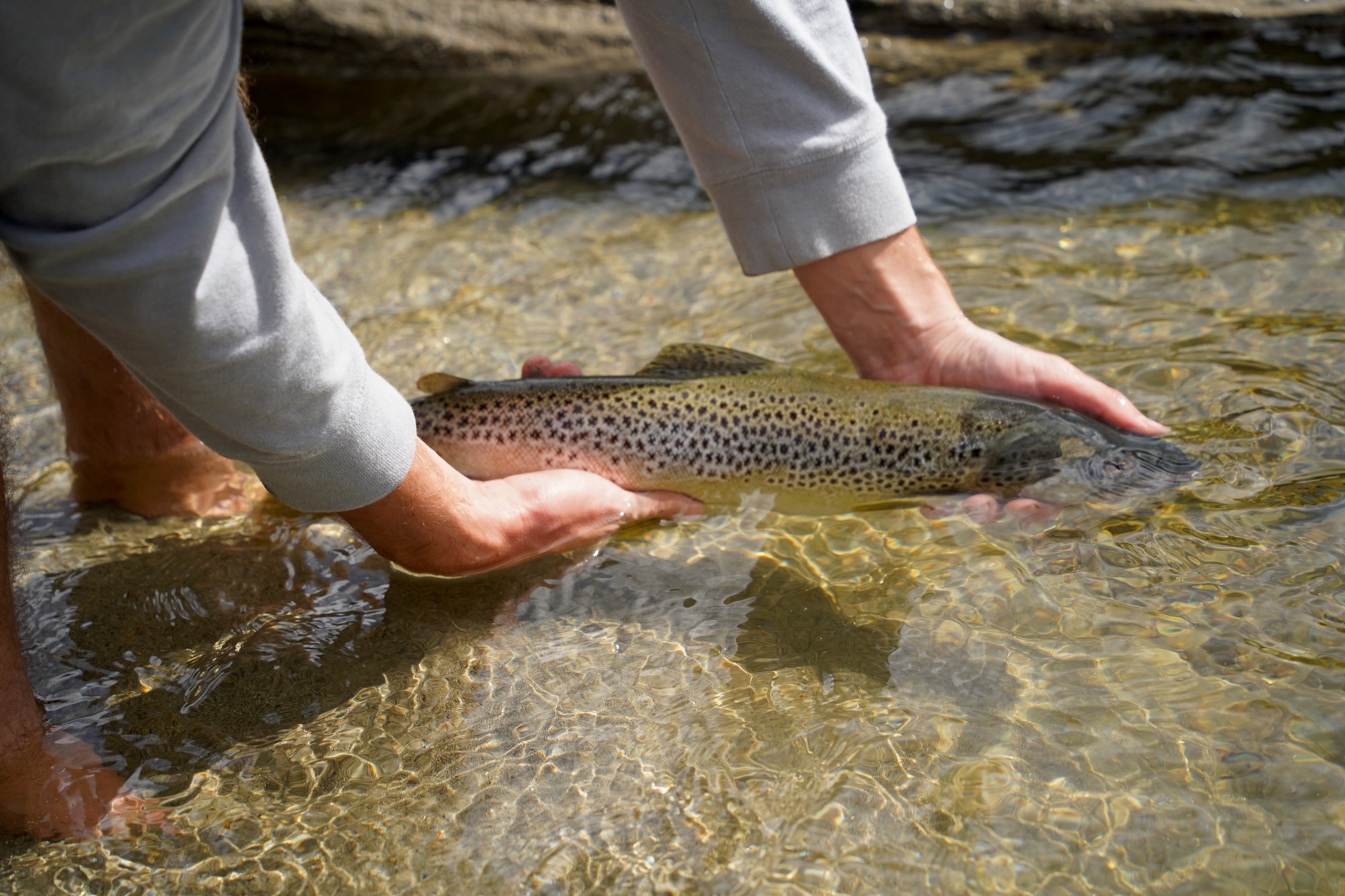
Do you remember the first trout you caught?
You could say it was the brown trout that kick started sport fishing. Fly fishing for sport began with the trout, and was developed in Scotland a few centuries back.
These fish only actually colonised Britain about 13,000 years ago. As the ice age melted away, new pristine rivers started flowing into the sea. Explorative sea trout got a whiff of this untapped, pristine habitat. They moved in and conquered. There were no other small fish species in the rivers at this time, the trout were the pioneers of our rivers.
As we will get to later, the trout are incredibly genetically diverse and highly adaptive to the water they find themselves in. This means you can’t just figure them out once and you’re done. It’s a never ending game, and a spectacularly rewarding one at that.
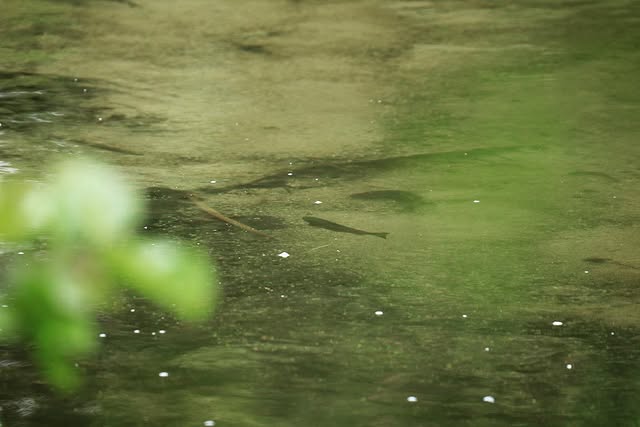
Spinning set up for trout
Below we have recommended trout rods along with which exact reels to pair with them. We look at the best rod length for spinning for trout as well as the best reel size for each of those rods.
Rod length
7ft is a useful length because you can fish underneath trees without causing too many issues casting. For this reason, some would go shorter to 6ft. This is a less conventional approach and can make it harder to keep lures in the middle of a river, since you’ll always be retrieving at a steep angle back to the bank. 8ft+ will add casting distance in large reservoirs etc but limit where you can fish.
Reel sizes
Assuming your rod casts no more than 15g, you will definitely need a reel no larger than size 2500. Shimano & Daiwa reels are lighter than Penn and more refined for ultra light fishing. A useful rule is that if your rod is under 7ft at this casting weight, you definitely need a 1000 size. If your rod is over 7ft, it’s down to your preference. I’d generally recommend 2500 as it’s more versatile and frankly useful if you do hook something other than a British trout!
Braid vs Fluorocarbon for trout fishing in the UK
In many waters, braid is banned because if you get snagged and cut off, it floats, which can lead to birds getting tangled up. Thankfully, this seems to be extremely rare, but fluoro is a good shout in this regard.
Fluorocarbon is invisible to fish, and saves you having to use a long leader. It’s not as nice to fish with as top-end braid, even when you drop the breaking strain down, because it does coil a little when using the lightest lures. We recommend it for trout fishing, and recommend buying a second spool for your reel especially for this purpose if you can so it’s easy to swap over as needed.
Why 2” plugs?
Most UK brown trout out there are less than a few pounds and 2” is a good size for them. They may still hit 3” plugs, but this can do damage to fish with trebles hooking fish in the body. The best thing for it are 2” plugs with single hooks. 3” or 4” plugs are useful in larger waters with bigger, stocked fish, or when targeting sea trout.
Why 2” Soft plastics?
Trout notoriously nip at the tails of soft lures, and you will miss a lot of fish if your soft plastics are too large. This is a very common beginner mistake and massively reduces your chances of catching fish.
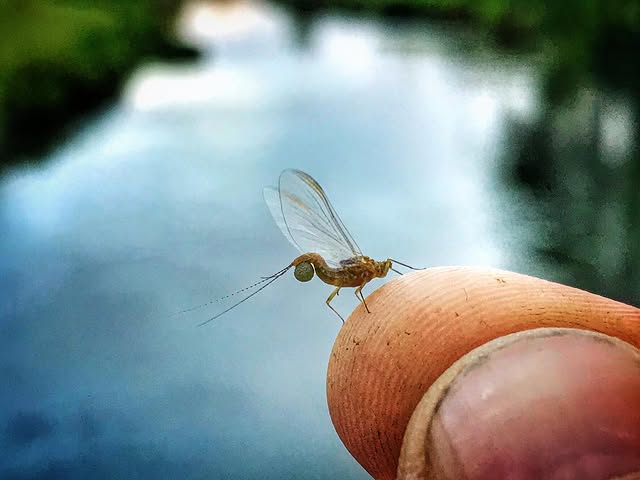
River fishing for sea trout is different…
In rivers with sea trout moving through, you’ll want a slightly heavier set up – a spinning rod that casts about an ounce (30g). If your rod is heavier than this, you won’t be able to fish with the lightest lures which is limiting, particularly on tough days. If you use an ultra light trout rod that casts 7g in a strong current, even small plugs will have your rod permanently bent and bigger sea trout will take you around bends in the river and cut you off.
We have a full guide on choosing trout lures and spinners which you might enjoy after this.
River fishing for trout
#20 Read the river and uncover the ‘lies’ of the trout
These are places trout can sit where they receive a constant stream of food, without having to swim too much. The space just behind a log then juts out into the river. Pockets of slower-moving water. The base of a bridge. These spots allow trout to conserve energy while getting lots to eat.
Bass will also do this in estuaries, where they sit in the dips of sandbanks for the same reason.
Brown trout will compete with each other for these lies. More dominant fish are able to intimidate smaller fish and secure the best spots. They do this by opening their mouths and spreading out their fins to look larger.
When lure fishing for trout you can boost your luck by targeting these ‘lies’ and working out where they are.
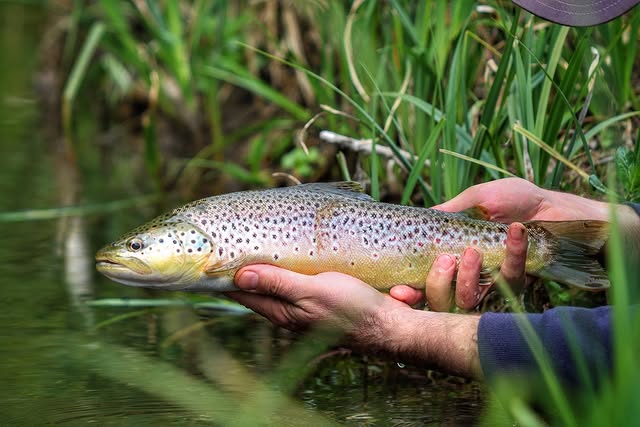
#19 Pay special attention to the deeper water that runs along the river bank.
When you look at a river, you will notice that there are deeper sections and channels. These are often run for the trout. You will find trout in the shallower areas, with white-capped rapids and broken ground, but usually, it’s the smaller trout. Bigger fish secure better positions in the deeper, darker areas of water.
So, the best places to catch trout in a river are often areas of deeper water next to the river bank. The bank usually provides most of the ‘lies’ in a given stretch, and the deeper water provides a nice run for the trout.
There is often a big brown trout waiting on the edges of the current, in a deeper pool.
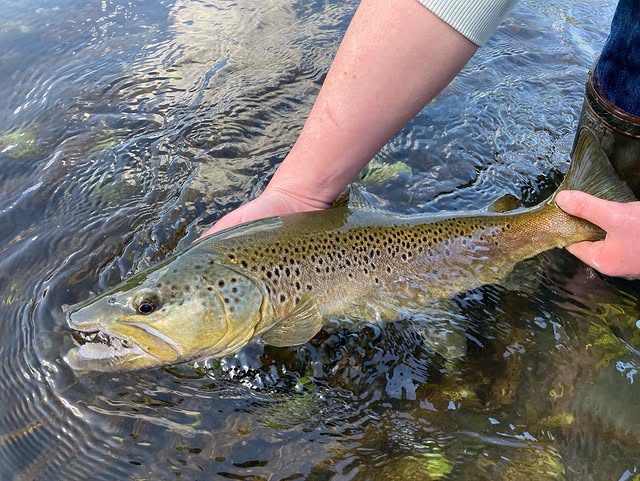
#18 Oxygen, temperature, acidity and its effect on river fishing for trout
In rivers and streams, water temperature and oxygen levels are pretty consistent throughout the water. It all gets mixed up. The deeper sections of water in a river will have the same temperature and oxygen levels as the shallower parts.
Decaying plant or algae matter and warm waters make for a low-oxygen environment. The trout need cool, oxygen-rich water for their eggs to survive. They also won’t feed as actively if the oxygen is low.
The water temperature in rivers in the south of England is rarely going to reach temperatures that make trout uncomfortable. Further north and in Scotland in mountain streams it will dip below the ideal temperature for trout fishing in winter. Algae blooms and sewage being dumped in rivers are a bigger problem than temp in most places.
#17 Look for structure.
We have covered how logs that protrude out into the river or stream create pockets of slower-moving water that trout like to sit in. Other forms of structure include boulders, pipes and the walls at the bases of bridges and piles of wood that build up after storms. There will be features that are specific to the water near you – perhaps it’s a shopping trolley that somebody chucked into a river that has become clogged up with autumn leaves and forms a barrier in the river. Maybe it’s just the area behind a bank as part of the natural meandering of the river. All achieve the same effect. Trout love these places because they can feed on the conveyor belt of food with minimal movement and energy expenditure. If you drift your lures past them, coming down from upstream, you’re offering them exactly what they came for.
#16 Systematically work the stream to search 100% of the area
When you reach a pool or section of river, it pays to fish the whole thing before moving on. You systematically work the pool. You do this by casting to the top of the pool and then working your way down. This is because trout sit in the pools facing upstream, and you might spook them if you retrieve them from up behind them. Even though in theory lures should always move with the current, in reality, it’s often necessary to retrieve upstream. Trout do still hit lures when they’re moving against the current.
Naturally, we will cast in the areas that look most likely to hold fish and we should have a strong bias for these areas. However, it also pays to have a quick cast in every pocket and section of a river to ensure you’ve covered all possible ground.
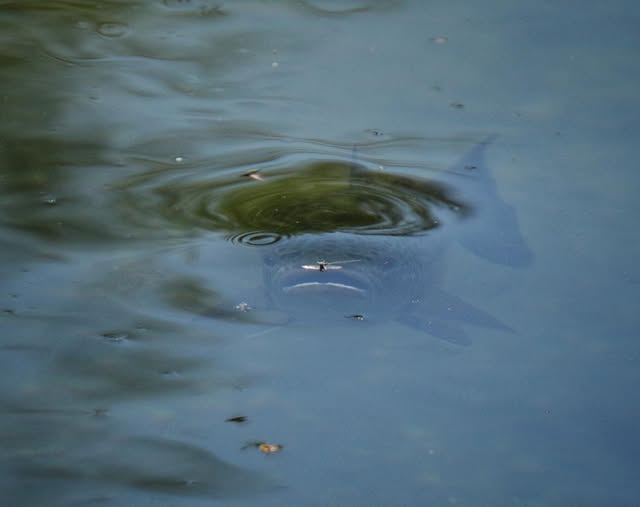
#15 Be quiet.
Trout can see you stood on the bank. They are aware of predators on the land because they’re half expecting to be ripped from their watery world and flung between the jaws of a brown bear. If you make noise and stand close to the water’s edge you’re likely to spook the fish. They will lock their jaws and behave cautiously. If the river happens to run alongside a popular walkway for pedestrians, this may not apply.
#14 Avoid dressing conspicuously when lure fishing for trout in clear water
Yes, the trout can see you. As mentioned above, the main predators of these fish in rivers are mammals and birds.
Lots of people wear dull-coloured clothing. It’s not essential, but when taking those first few casts, it pays to do so while standing back from the water’s edge, out of view. Lure fishing for trout is highly active and can involve sight fishing in clear water. Don’t forget they might be looking back!
Lake fishing for trout
#13 Every trout lake is different
A study on brown trout in Loch Ness identified three varieties of fish. Each had adapted to life in three different ecological niches within the loch.
One type feeds mostly on insects around the edges of the loch. It has a mouth and body size adapted for that purpose. Another feeds primarily on tiny zooplankton – the tiny larvae of insects, crustaceans and fish. This type has a tiny mouth. The third variety eats other fish. In some places, this fish-eating variety has evolved a larger head and grows massive. In Loch Melvin, a fourth variety was identified. This type spends all its time on or near the bottom of the loch, in the deepest areas. Read more about similar research here.
When we are lure fishing for brown trout, we are not fishing for one type of fish.
#12 Fish the lake banks while the air is cool
Trout are more likely to be found around the shallow banks of a lake in the early morning or the evening, as these areas get hotter in the day. They also feel less at risk from predation at these times. There’s likely to be a load of insects on the surface that fell in overnight, too. If you are the first person to arrive at a lake or reservoir, it’s often worth fishing the shallow banks first.
#11 When reservoir fishing for trout, target inflows and outflows
When fishing a reservoir you might benefit from targeting any inflows or outflows. These areas of moving water oxygenate the water and bring in new food, which can cause trout to congregate around them. This behaviour is seen in a huge range of species in both fresh and saltwater.
#10 In deeper water lochs and lakes, trout linger around the thermocline
In lakes water temperature and oxygen levels change throughout the water, so trout will congregate in areas that have the optimal mix, especially in lakes where the temperature or oxygen level is suboptimal overall.
If you’re fishing in an especially deep water reservoir, the bottom section of the water could have uncomfortably high pressure for trout and you can expect to find them lingering around the ‘thermocline’ which is a layer in the water where warm water meets cool water and nutrients accumulate a bit further up. Because nutrients accumulate here, the algae accumulate which the zooplankton eat which then attracts baitfish which attracts the trout.
This layer is usually in the bottom 2/3rds of the water column. It’s very difficult to suspend a lure at such a specific depth in the water, but it’s worth being aware that the trout may all be lurking at a similar depth, as it can help you try to figure out how long you should let lures sink to reach that optimal depth. The same principle applies elsewhere when lure fishing – depth awareness is a useful skill.
Lake trout may have a narrower range of food choices, and where lake trout are chasing baitfish, it pays to fish with paddle tail lures and other fish imitations.
#9 Lake fishing for trout is often best in spring and autumn in shallower lakes
When the water temperature is highest in summer you can expect trout to prefer deeper parts of a lake. Trout that specialise in chasing bait fish tend to linger in the deeper parts of lakes anyway. In smaller lakes and ponds in the South of England, the best fishing is likely to be in spring and Autumn when the water temperature is cooler. Lure fishing for trout is best when the water isn’t too cold. In stocked fisheries, there can be excellent fishing year-round.
#8 The best trout fishing tackle is an ultra-light spinning rod
The best trout fishing tackle is lightweight to allow for finesse. For streams, I’d go ultra-light (rods rated to 10g or less) and for rivers, I use a rod rated to 20g. Lure fishing for trout is more fun with light gear and gives you an advantage in casting smaller lures.
#7 Use 6lb Flourocarbon lines, they’re invisible to brown trout
Let’s start with line because the rest of the tackle you need is determined by this ‘limiting factor’. Essentially, you need to use very light lines to avoid spooking the fish and to be able to present small lures. 6lb flourocarbon is perfect. In many places, braid is banned. The great thing about using flourocarbon when lure fishing for trout is it doesn’t stretch so you get great bite detection. It’s also invisible to fish and you can tie lures directly to your mainline with no leader.
#6 Grab a lightweight rod & reel set up
Since your line is so light when spinning for brown trout, your rod and reel need to absorb energy effectively so your line doesn’t snap when you hook a fish. To achieve this, you need a good drag that releases the line in a consistent way at a given level of tension (bad reels release the line inconsistently).
A size 2500 / 3000 spinning reel with a rod that casts up to 10g is ideal for stream and lake fishing. In rivers, a heavier rod is needed as a sea trout in the current could easily just strip an ultra-light set up of line. For this, you’ll want a more standard spinning rod that casts about an ounce (30g). If your rod is heavier than this, you won’t be able to fish with the lightest lines which is important for lure presentation.

#5 Use lures & spinners that have hooks set as the rear of the lure
FISH MAG has a full guide on choosing trout lures for different situations. The low down is that it’s good to have a wide selection, and very small lures can be effective. You will get more hookups if the hook point sits further back on the lure because trout often nip at the tails of lures. This is partly why the Mepps spinner has been a timeless classic for lure fishing for brown trout. The Mepps has a single treble hook on the back of the lure which maximises hookups.
#4 Grab a licence and check it’s the right time of year
Brown trout can be targeted legally in most lakes and lochs year-round in the UK, so long as they are static waters. It’s worth checking with each specific spot you plan on fishing. A regular UK coarse fishing licence includes brown trout, so you’re good to go with one of those. For migratory trout – e.g. sea trout – you need a game fish licence.
In terms of when you can fish, the rules are different for each region and river in the UK. You can check on the gov website by selecting the region you’re in, then looking at the specific river you want to fish. The short and rough version is that the close season is over winter. Regardless, there is always somewhere you can catch trout year-round.
Types of brown trout: from ferox trout to sea trout
#3 Are Ferox trout and brown trout the same species?
The extreme genetic diversity and adaptability of brown trout have led to the emergence of Ferox trout. These trout have become geographically isolated in lakes abundant with Arctic charr. Their pescatarian diet and predation of larger fish have resulted in the development of a massive head. Ferox trout live much longer than regular trout, aiding their growth to larger sizes. Their rarity makes them a prized catch that requires careful handling. As specialised predators, Ferox trout can be effectively targeted with larger lures like paddle tails. These lures are particularly effective when they mimic the Arctic char or other freshwater species that the Ferox trout predate. You can find Ferox trout in the same habitats as Arctic char. These include the acidic lochs of Scotland.
#2 Spinning for ferox trout – and bigger trout in general – drop a paddle tail into deeper water
To catch Ferox trout, cast larger paddle tails into the deeper waters of lochs in Scotland or lakes in Ireland. Big trout are known to hit very small lures – they are famous for hitting flies. However, Ferox trout and many big lake trout have adapted to eating fish. They often inhabit the deeper parts of lakes and lochs. For this reason, metal lures that you can cast long distances to explore the water column are useful. To reach the Ferox trout, you need to cast a larger lure into that deep water. If there are pike present, you might need a thin wire trace.
Lure fishing for sea trout
#1 How to catch sea trout on lures
To many anglers, the sea trout is the ultimate form of the brown trout. Indeed, these fish are often larger than the brown trout we catch in the UK (except ferox) and have undergone a transfiguration that leaves them glimmering.
Trout are migratory, and leave the rivers they are born in to head out to sea, where they lose their mottled brown appearance and become a dazzlingly silver blue, before returning to their home river, changed and impressive. This lifestyle ensures that only the fittest trout reproduce, as very few survive the journey. (Although apparently female sea trout will breed with young male brown trout which are aptly named ‘precocious parr’.
Sea trout are best targeted in June and July in the first two hours after darkness. The fish are still in the habit of feeding around this time at sea, and so when they return to the rivers they continue this out of habit. After the first two hours of darkness, the trout will move into deeper sections of the river and simmer down for the night. Sea trout are not as lazy as brown trout and will linger in fast moving sections of water.
Spinners and spoons are good options because if you lose them they will rust and not pollute the river. They are the best lures for sea trout, alongside flies fished on a bombarda rig.
Genetic variation of brown trout
There are five lineages of trout that evolved in isolation from one another. Within these lineages, there is a huge variety and the methods deployed to catch them on lures should be different. Trout introduced from the UK to the US, NZ and Australia now look very different from one another. They’ve only had a few human lifespans to achieve that. They change their colour to match their surroundings and they grow to a size dictated by food availability. Their heads and eyes also change to suit the type of prey they feed on.
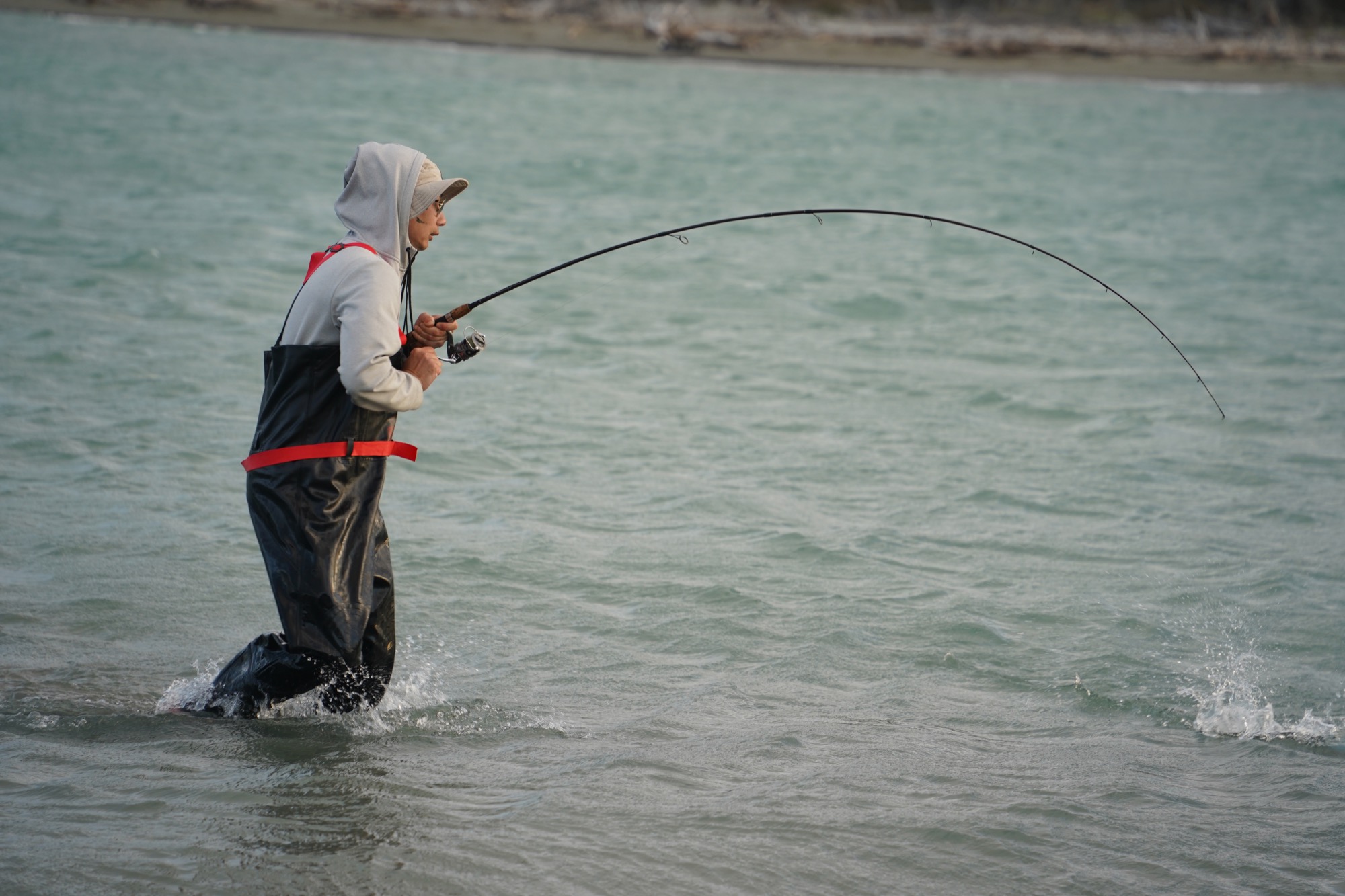
There is immense genetic variation between different populations of brown trout. Attempts have been made to assign them to 50+ separate species. These fish are the most genetically diverse vertebrate known to man. They’re far more genetically diverse than humans. Imagine if some populations of humans were 20ft tall with tiny eyes, and others 3ft tall with huge eyes. That is the reality for the brown trout.
Brown trout colonised the UK after the last ice age, then the new world
These fish only colonised Britain about 13,000 years ago. As the ice age melted away, new pristine rivers started flowing into the sea. Explorative sea trout got a whiff of some untapped pristine habitat and they moved in and conquered. There were not yet baitfish in these rivers for the trout to eat, only insects.
After Brits colonised the US, Aus and NZ, they brought brown trout with them in the hulls of ships. People were already hooked on lure fishing for trout, and the fish that were present in the waters in the US and NZ were deemed not sporting or delicious enough. Brown trout will eat basically anything. Flies, baby voles, mice, overconfident fledglings, other fish … They survive well where the water isn’t too hot or too cold and wherever there’s a decent amount of oxygen.
Q&A
Rainbow trout vs brown trout?
Rainbow trout are a separate species from the brown trout, but they both belong to the family Salmonidae. They are different species with different genera, too, so they aren’t as closely related as many anglers would imagine. Back in their evolutionary history, they had a shared ancestor, but the brown trout evolved to live in the North Atlantic and the Rainbows in the North Pacific. Their colouration reflects the light and colour of the parts of the globe they inhabit.
How to tell a salmon from a sea trout?
You can tell a sea trout from a salmon because on the roof of a trout’s much there is a double row of teeth. In salmon, there is a single row or no teeth on the roof of the mouth at all.
Do brown trout get lice?
It’s more common to find lice on trout that have been out to sea. Sea trout gain a silvery colour after being in a marine environment, but once they return to the river regain their mottled appearance. Therefore, the lice present on a regular-looking brown trout could be sea lice.
Do brown trout eat other trout?
As they grow, the likelihood a brown trout will eat its own kind increases, but trout can grow very large eating only insects, as is the case in places such as Iceland, where the trout can reach 4kg on insects alone. The size a trout grows to is not solely determined by food type, it’s also linked with the population of trout in the water they inhabit. More trout means less food on average per fish, and smaller trout.
Why are chalk streams famous for trout fishing?
In the UK, the most famous and productive places to fish for brown trout are the chalk streams in the southeast of the country. Chalk streams are an incredibly geologically rare environment, with the south of England having the only chalk streams in the world except for Columbia. What impact does this have on the water? The fish grow larger down south than they do in the acid river systems in the Scottish highlands, where the water passes through the PH 3 acidity of peaty soils. That peat impacts the water like it impacts their whisky.
How long do trout live?
Trout can live for two decades, meaning a young angler landing a large fish might be catching a creature that swam that river before the kid was a glimmer in his mother’s eyes.
Do brown trout migrate?
Some brown trout migrate to sea and return – becoming silvery-blue sea trout on their journey. Others remain residents in their local water and keep their mottled spots. Even so-called ‘resident’ fish get itchy fins and may migrate within their river system or move in and out of static lakes at different stages of their lives. In comparison with salmon, the migrations of trout are far more varied in duration and in location. There are even in-between trout – slob trout – the variety of brown trout that has settled around the mouths of an estuary, where it lives in the brackish waters, with an appearance somewhere between a sea trout and a brown trout.
Can trout change colour?
Trout can change colour quickly and the colour change reflects their mood as well as the colours of their background. Dominant fish are darker, and fish being submissive become paler.
What is the world record brown trout?
The largest wild brown trout landed was 31kg, caught from Lake Maggiore in Switzerland in the 1920s. In the UK record for wild brown trout is 14.4kg (31lb), which was caught on Lack Awe.
Fishing ‘Duffers fortnight’ is the time in Spring when huge numbers of mayflies leave the water’s surface covered in twitching insects and the trout feed much more impulsively and actively than usual. It’s much easier to catch fish when they are in a feeding frenzy, which is why this period is known for making trout fishing easy.
When was fly fishing for trout invented?
Aelian, a roman scholar, recorded in 200 AD that Macedonians would ‘cast with rods to speckled fish’. This sounds familiar.
